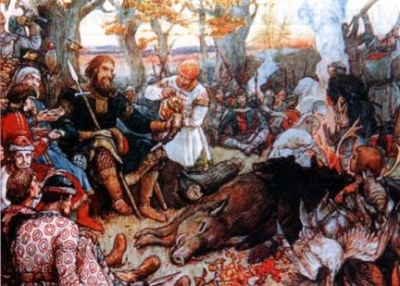
Feudalism was the structure of the Mediaeval Rus. By the latter half of the eleventh century, or even before, all the principalities in Kievan Rus were headed by a Rurik dynastic prince who resided in a castle situated in the capital city. All princes had a group of warriors known as druzhina. They guarded the forts at the frontier and protected the prince’s interests. The most important ones of the druzhina were the boyars, who were land-owners. Some of the boyars even had their own castles!
Each boyar had stewards (tivun) to take care of the land, different categories of semi-free peasants, and a few categories of enslaved people working in households and estates, who were originally military captives. Such captives were forced to work in agricultural land and as artisans and merchants, but whether or not they were considered to be enslaved is a topic of debate among scholars. It is said that their status evolved over time.
In terms of religion, monasteries were established by the Byzantine church in most of the principalities, with the head known as the Metropolitan based in Kyiv. Sheriffs (virnik) and mayors (posadnik) were given the duty of collecting various fines, tributes, and other fees for the city treasury.
Picture Credit : Google




